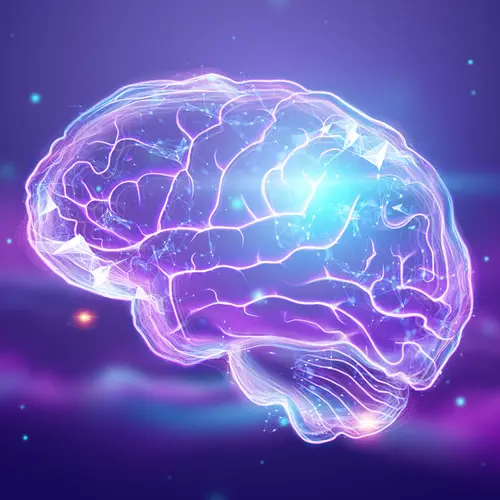Epilepsy isn't one disease or condition. There are many kinds of epilepsy with different symptoms and patterns. It's important to know what kind you have. It can help you and your doctor understand the treatment you need, the triggers to avoid, and what to expect in the future.
New Terms for Epilepsy
If you've had epilepsy for a while, you may hear your doctor use terms that are different from what you're used to. That's because the International League Against Epilepsy (ILAE), the main organization that studies the condition, came up with a new way to organize and describe seizures and epilepsy types in 2017. The guidelines introduced new terms and got rid of some older ones.
In the long run, experts hope this new way of classifying epilepsy will be easier. But right now, the changes may be a little confusing.
During your next appointment, check with your doctor about how your epilepsy is classified now. It's possible that the type of epilepsy you have has a new name.
How Doctors Diagnose Types of Epilepsy
All types of epilepsy have seizures as a symptom. These are surges of electricity in your brain. They're like electrical storms that briefly stop your brain cells from working normally.
If you had a seizure caused by epilepsy, your doctor will follow three steps to give you the right diagnosis.
- Figure out the types of seizures you had
- Based on the type of seizure, figure out the type of epilepsy you have
- Decide whether you have a specific epilepsy syndrome as well
To come up with answers, your doctor will ask you questions and run tests, like an EEG (electroencephalogram) to check your brain waves or MRI (magnetic resonance imaging) to look at the structure of your brain. It is also helpful to bring someone that has witnessed the seizures, or to have a video of the seizures in order to classify the seizure type.
Experts now divide epilepsy into four basic types based on the seizures you're having:
- Generalized epilepsy
- Focal epilepsy
- Generalized and focal epilepsy
- Unknown if generalized or focal epilepsy
Generalized Epilepsy
If you have this type of epilepsy, seizures start on both sides of the brain (or quickly affect networks of brain cells on both sides). This type of epilepsy has two basic kinds of seizures:
Generalized motor seizures. These used to be called "grand mal" seizures. They cause your body to move in ways you can't control, sometimes dramatically. Tonic-clonic seizures are one example. When it hits, you lose consciousness and your muscles stiffen and jerk. Other types you may hear your doctor talk about include clonic, tonic, and myoclonic.
Generalized non-motor (or absence) seizures. They used to be called "petit mal" seizures. Some specific types you may hear your doctor mention are typical, atypical, and myoclonic.
During this type of seizure, you may stop what you're doing and stare into space. You may also do the same movements over and over, like smacking your lips. These types of seizures are generally called "absence" seizures because it's like the person isn't really there.
Focal Epilepsy
In this type of epilepsy, seizures develop in a particular area (or network of brain cells) on one side of the brain. These used to be called "partial seizures."
Focal epilepsy seizures come in four categories:
Focal aware seizures. If you know what's happening during the seizure, it's an "aware" seizure. These used to be called "simple partial seizures."
Focal impaired awareness seizures. If you're confused or don't know what's happening during your seizure -- or don't remember it -- it's an impaired awareness seizure. These used to be called "complex partial seizures."
Focal motor seizures. In this type of seizure, you'll move to some extent -- anything from twitching, to spasms, to rubbing hands, to walking around. Some types that you may hear your doctor talk about are atonic, clonic, epileptic spasms, myoclonic, and tonic.
Focal non-motor seizures. This type of seizure doesn't lead to twitches or other movements. Instead, it causes changes in how you feel or think. You might have intense emotions, strange feelings, or symptoms like a racing heart, goose bumps, or waves of heat or cold.
Generalized and Focal Epilepsy
Just as the name suggests, this is a type of epilepsy where people have both generalized and focal seizures.
Unknown if Generalized or Focal Epilepsy
Sometimes, doctors are sure that a person has epilepsy, but they don't know whether the seizures are focal or generalized. This can happen if you were alone when you had seizures, so no one can describe what happened. Your doctor may also classify your epilepsy type as "unknown if generalized or focal epilepsy" if your test results aren't clear.
Epilepsy Syndromes
In addition to a type of epilepsy, you could also have an epilepsy syndrome. These are more specific than the type. Doctors diagnose syndromes based on a bunch of symptoms or signs that tend to go together as well as the results of testing (MRI and EEG), which helps to classify the syndrome.
Some of these features include the age you started getting seizures, the type of seizures you have, your triggers, the time of day seizures happen, and more.
There are dozens of epilepsy seizure syndromes. Some include West syndrome, Doose syndrome, Rasmussen's syndrome, and Lennox-Gastaut syndrome.
Treating Different Types of Epilepsy
Once you get a diagnosis, you and your doctor will decide on the best treatment. There are lots to choose from. Depending on the type of epilepsy you have, some treatments may work better than others.
For example, people with generalized epilepsy may do better with broad-spectrum medications, like lamotrigine, levetiracetam, or topiramate. Surgery may work better in some people with hard-to-treat focal seizures that haven't been helped with medication.

